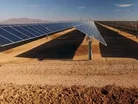New South Wales pushes for greater sustainability

The government of New South Wales has formulated its approach to sustainability, which aims to invigorate renewable energy and EV uptake within the territory.
Called ‘Net Zero Plan Stage 1: 2020-2030’, the plan is intended to act as a roadmap to attaining carbon-neutrality by 2050.
Included within the report is information on targets for optimising energy efficiency, researching the utilisation of hydrogen, encouraging more people to convert to EVs and developing renewable energy sources.
Produced in tandem with the government’s NSW Electricity Strategy, the total investment for its new vision will be AU$11.6bn for the New South Wales (NSW) area, which, in turn, will create 2,400 jobs.
Recognising the importance of sustainability
The government’s position stems from a realisation that conventional methods for generating energy are no longer sustainable, “Traditional generators are ageing and our transmission system is congested. Electricity prices are putting pressure on households and businesses.
“This strategy [NSW Electricity Strategy] will respond to these challenges and support a new affordable and reliable energy system – one that meets both our generation needs and our emissions reduction target,” said the government on its website.
Its coordinated plan addresses five key areas:
-
Delivering a Renewable Energy Zone.
-
Conserving energy during peak demand.
-
Developing new generator equipment.
-
Bolstering NSW’s energy resilience.
-
Making the energy sector easier to invest and work in.
SEE ALSO:
Meeting the challenge
As a country that is committed to achieving the goals of the Paris Agreement, Australia has made notable progress, yet it is still collectively very reliant on fossil fuels for its electricity generation - only 14% of power comes from renewable sources.
Yet the NSW Government acknowledges that the current operating costs of renewable energy generation are competitive and efficient - the report highlights that a rooftop solar project of 1,300MWh could $200,000 per year and mitigate 1,500 tonnes of carbon.
Also, with transport creating the second-largest output of CO2 emissions per annum (28 Mt) after energy generation itself, it is clear that an increase of EVs would have a drastic effect on the NSW region’s emissions.
“The global electric vehicle market is growing rapidly, with about 2.1 million electric vehicles sold around the world in 2018. In Australia, electric vehicles are forecast to reach upfront price parity with traditional combustion engine vehicles from 2024,” the report states.
Changing this aspect will mean greater investment in EV charging infrastructure and developing a wider range of options to suit consumer taste. Despite potentially presenting a large challenge, the NSW Government has factored this into its plan going forward:
“By encouraging vehicle fleet procurers to buy electric vehicles, their bulk purchasing power will incentivise importers to sell a greater range of electric vehicle models.
“These vehicles are typically resold to the second-hand market after three to five years, giving NSW drivers more electric vehicle options at a lower cost.”
If NSW can effectively tackle electricity generation and transport by successfully applying a sustainability methodology, meeting targets and still meet the everyday demand of its population, the region will be on its way to a vastly more sustainable future.
For more information on business topics in ANZ, please take a look at the latest edition of Business Chief ANZ.
- Top 10 fastest-growing energy companies in the APAC regionCorporate Finance
- Lightyear 0 – probably the world’s most sustainable carSustainability
- Sungrow connects China's largest solar-plus-storage projectSustainability
- Mitsubishi Power: committed to transforming energy systemsLeadership & Strategy



